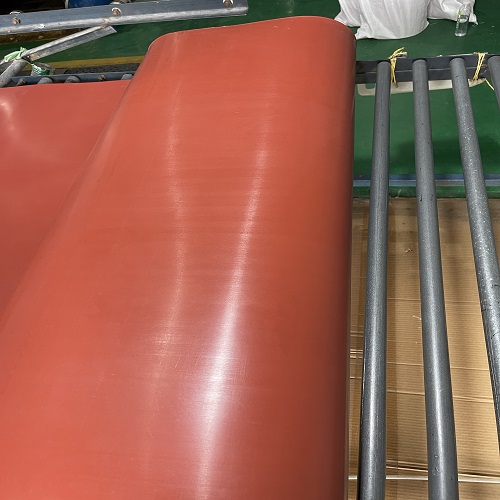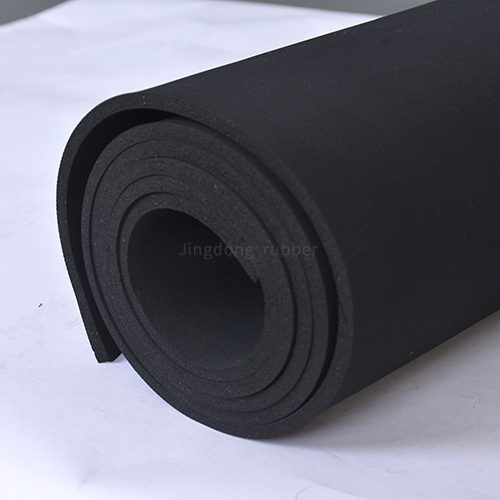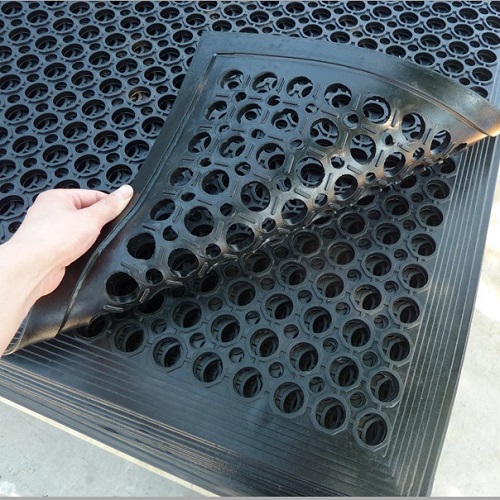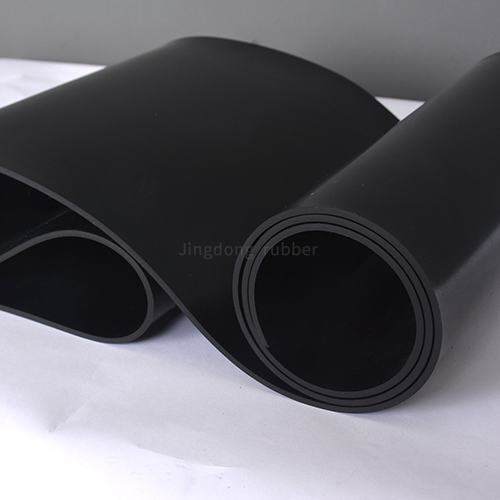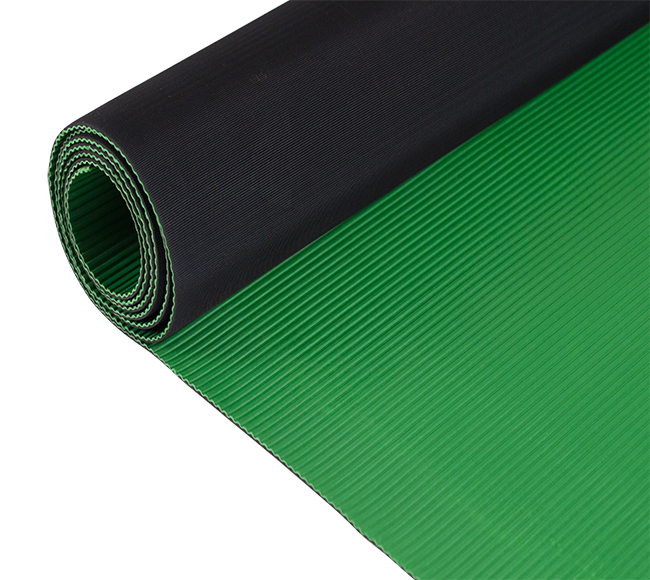FVMQ Rubber Sheet
What is an FVMQ Rubber Sheet?
An FVMQ rubber sheet is a high-performance sealing material manufactured from Fluoro-Vinyl-Methyl-Siloxane. This specialized elastomer combines the superior thermal stability of silicone rubber with enhanced resistance to fuels, oils, and aggressive chemicals. Primarily used in demanding environments, FVMQ sheets are the material of choice for applications where standard silicone or fluorocarbon elastomers fall short, offering a unique balance of properties for extreme conditions.
The molecular structure of FVMQ incorporates fluorine, which significantly improves its fluid resistance compared to standard VMQ (silicone) rubber. This makes it exceptionally suitable for the aerospace, automotive, and chemical processing industries. Whether used as a gasket, seal, or insulator, an FVMQ rubber sheet provides reliable performance under stress, maintaining its integrity across a wide temperature spectrum and in the presence of harsh substances.
Key Specifications and Properties of FVMQ Rubber Sheets
Understanding the technical parameters of FVMQ sheets is crucial for proper material selection. Below is a detailed breakdown of its key characteristics and standard specifications.
Material Properties Overview
- Base Polymer: Fluoro-Vinyl-Methyl-Siloxane
- Appearance: Typically supplied in sheets of various colors (e.g., red, brown, black).
- Density: Ranges from 1.4 to 1.6 g/cm³.
- Tensile Strength: 7 - 12 MPa (1000 - 1750 psi).
- Elongation at Break: 150% - 400%.
- Hardness (Shore A): Commonly available between 40 and 80.
- Compression Set: Excellent, typically 10-25% (22 hours at 175°C).
Detailed Performance Data Table
| Property | Test Standard | Typical Value Range | Remarks |
|---|---|---|---|
| Temperature Range (Continuous) | ASTM D1329 / D2000 | -50°C to +200°C (-58°F to +392°F) | Short-term exposure up to 230°C possible. |
| Fluid Resistance (Volume Swell) | ASTM D471 |
|
Superior to standard silicone; similar to some FKM types but with better low-temperature flexibility. |
| Weather & Ozone Resistance | ASTM D1149 / D1171 | Excellent | No cracking when exposed to ozone or UV radiation. |
| Flame Resistance | ASTM D635 / FAR 25.853 | Self-extinguishing | Often meets specific aerospace and transportation flammability standards. |
| Thermal Conductivity | ASTM C518 | 0.2 - 0.3 W/m·K | Good electrical insulation properties are retained. |
Standard Available Forms and Sizes
FVMQ rubber sheets are supplied in various forms to suit different manufacturing and fabrication needs.
| Form | Common Thickness | Common Sheet Sizes | Standard Roll Sizes |
|---|---|---|---|
| Sheets (Calendered) | 0.5mm to 6mm (0.020" to 0.250") | 500mm x 500mm, 1m x 1m, 48" x 48" | N/A |
| Rolls | 0.8mm to 3mm (0.031" to 0.125") | N/A | 1m x 10m, 1m x 25m, 48" x 50 ft |
| Die-Cut Parts | Custom | Custom | N/A |
Frequently Asked Questions (FAQ) About FVMQ Rubber Sheets
Material Properties and Selection
What is the primary advantage of FVMQ over standard silicone rubber (VMQ)?
The primary advantage of FVMQ is its significantly improved resistance to fuels, oils, solvents, and chemicals. While standard silicone rubber swells and degrades rapidly in these environments, FVMQ maintains its physical properties and sealing force, making it suitable for applications in fuel systems, oil baths, and chemical processing equipment.
How does FVMQ compare to FKM (Viton®) in terms of performance?
FVMQ offers a unique middle ground between silicone (VMQ) and fluorocarbon (FKM). It provides better low-temperature flexibility (usable down to -50°C) and compression set resistance than most standard FKM compounds. However, FKM generally offers superior resistance to more aggressive chemicals and higher temperatures (up to 230°C continuously). The choice depends on the specific balance of low-temperature performance, compression set, and fluid resistance required.
What is the typical service life of an FVMQ rubber sheet?
The service life is highly dependent on the application environment, including temperature, media exposure, and mechanical stress. Under continuous operation at its upper temperature limit of 200°C, an FVMQ sheet can typically last for several years. In less demanding conditions at room temperature with intermittent chemical exposure, it can last for a decade or more. Always consult the manufacturer's technical data sheets for life prediction models specific to their compound.
Applications and Usage
In which industries are FVMQ rubber sheets most commonly used?
FVMQ sheets are predominantly used in the aerospace industry for fuel tank seals, O-rings, and gaskets in systems exposed to jet fuels and hydraulic fluids like Skydrol. They are also critical in the automotive sector, especially in high-performance and fuel-injected engines, for seals in fuel, oil, and transmission systems. Other key industries include chemical processing (for seals handling certain solvents and acids) and food and beverage (in specific high-temperature, oil-resistant applications where FDA compliance is available).
Can FVMQ rubber sheets be used for outdoor applications?
Yes, FVMQ exhibits excellent resistance to weathering, ozone, and UV radiation. It will not crack or significantly degrade when exposed to sunlight and atmospheric elements for extended periods, making it a suitable choice for outdoor seals and gaskets in automotive, aviation, and architectural applications.
Is FVMQ rubber suitable for food contact applications?
Special grades of FVMQ can be manufactured to comply with FDA (Food and Drug Administration) regulations CFR 21.177.2600 for repeated food contact. It is crucial to specify and confirm with your supplier that the specific FVMQ compound you are purchasing is certified for food contact if your application requires it.
Fabrication and Handling
How are FVMQ rubber sheets typically fabricated into parts?
FVMQ sheets can be fabricated using standard rubber processing techniques. This includes die-cutting for flat gaskets and washers, waterjet or laser cutting for complex 2D shapes, and punching. For creating molded seals like O-rings, the uncured FVMQ compound is compression, transfer, or injection molded and then post-cured (vulcanized) to achieve its final properties.
What adhesives are recommended for bonding FVMQ to other surfaces?
Bonding FVMQ can be challenging due to its low surface energy. A primer specifically designed for silicone and fluorosilicone rubbers must be applied first to ensure proper adhesion. After priming, high-performance silicone-based adhesives or specialized epoxy adhesives can be used. Surface preparation, including cleaning with isopropyl alcohol, is essential for a strong bond.
What is the shelf life of an FVMQ rubber sheet, and how should it be stored?
The typical shelf life for FVMQ rubber sheets is 5 to 10 years from the date of manufacture when stored correctly. It should be kept in a cool, dark, and dry environment, ideally at temperatures below 30°C (86°F) and away from direct sunlight, ozone sources (like electric motors), and humidity. Store the sheets flat and avoid stretching or compressing them to prevent permanent deformation.
Technical and Compliance
Does FVMQ rubber meet any specific industry standards or certifications?
Yes, FVMQ compounds can be formulated to meet various industry standards. Common ones include AMS (Aerospace Material Specifications) such as AMS 7278 for O-rings, and NSF/ANSI 61 for drinking water system components. Many are also compliant with UL 94 V-0 for flame retardancy and RoHS/REACH directives for restricted substances. Always request a certificate of compliance from your supplier.
What causes compression set in FVMQ, and how can it be minimized?
Compression set is the permanent deformation of a rubber seal after being under compressive load. In FVMQ, it is primarily caused by prolonged exposure to high temperatures while compressed. To minimize compression set, ensure the operating temperature is within the material's specified range, use the appropriate hardness for the application to avoid over-compression, and, if possible, design the seal geometry to allow for stress relaxation.
How is the chemical resistance of FVMQ quantified and tested?
Chemical resistance is primarily quantified by measuring the change in volume (swell), hardness, and tensile properties after immersion in a specific fluid for a set time and temperature, as per ASTM D471. A lower percentage of volume change indicates better resistance. The test results are typically presented in comparison tables, showing performance against a wide range of fluids like oils, fuels, acids, and alkalis.
- View as
